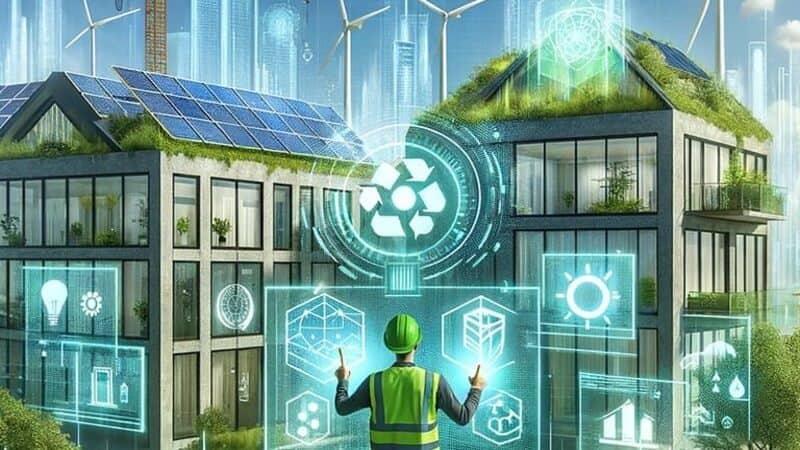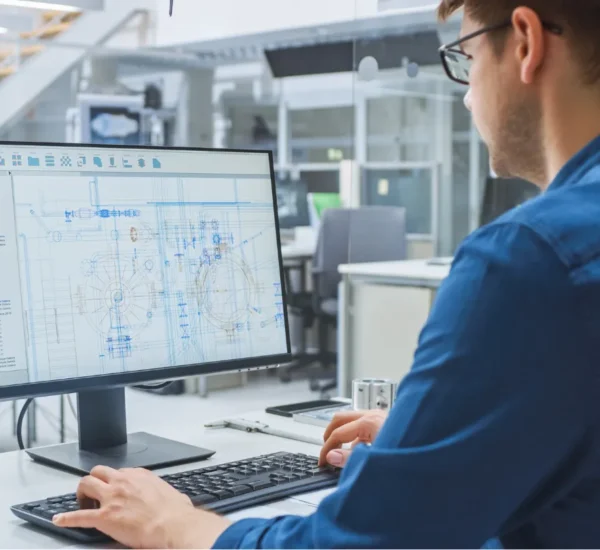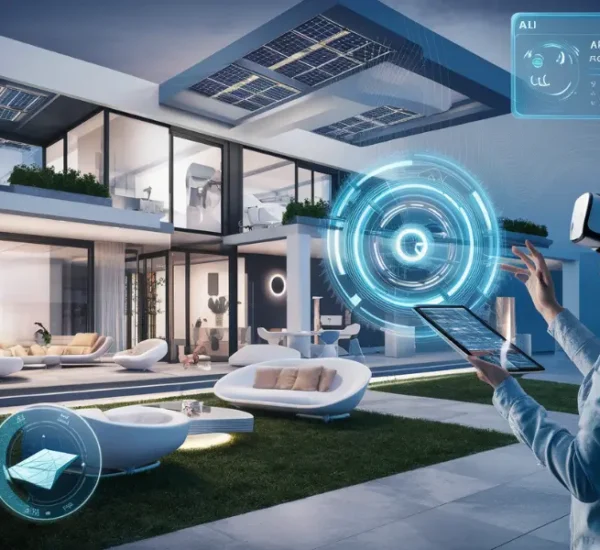Sustainability is no longer a trend in architecture—it’s a necessity. As the world grapples with the environmental challenges of the 21st century, architects are increasingly tasked with designing buildings that minimize their ecological footprint while maximizing energy efficiency, resource conservation, and occupant well-being. The right software tools can significantly aid designers in achieving these goals by providing powerful features that support green building practices, energy analysis, and sustainable design decision-making.
In 2025, a variety of software tools are helping architects create more sustainable designs. From energy modeling and building performance analysis to material tracking and carbon footprint calculations, these tools are streamlining the process of designing environmentally responsible buildings. Let’s dive into some of the most effective software solutions that can assist architects in designing for a greener future.
1. Autodesk Revit: Sustainable Design with BIM
Autodesk Revit has long been a leader in Building Information Modeling (BIM), but its 2025 iteration includes even more advanced sustainability features. Revit helps architects manage not just the geometry and documentation of a building but also its environmental performance.
- Key Features:
- Energy Analysis: Revit’s built-in energy modeling tools allow architects to analyze the energy performance of their buildings. The software enables the simulation of various environmental conditions, such as natural lighting, heating, cooling loads, and energy consumption, to ensure that the design is as efficient as possible.
- Solar Studies: Revit offers tools for performing solar studies, helping architects optimize building orientation and shading to reduce energy use.
- Material Data: Revit integrates with tools that track the environmental impact of materials, helping designers select low-carbon and sustainable options for construction.
- Why It’s Great for Sustainable Architecture: Revit’s BIM capabilities help architects make informed, sustainable design decisions throughout the entire project lifecycle, from planning to construction. Its energy analysis and material tracking features ensure that designs are energy-efficient, resource-conserving, and environmentally friendly.
2. EnergyPlus: Comprehensive Energy Modeling and Simulation
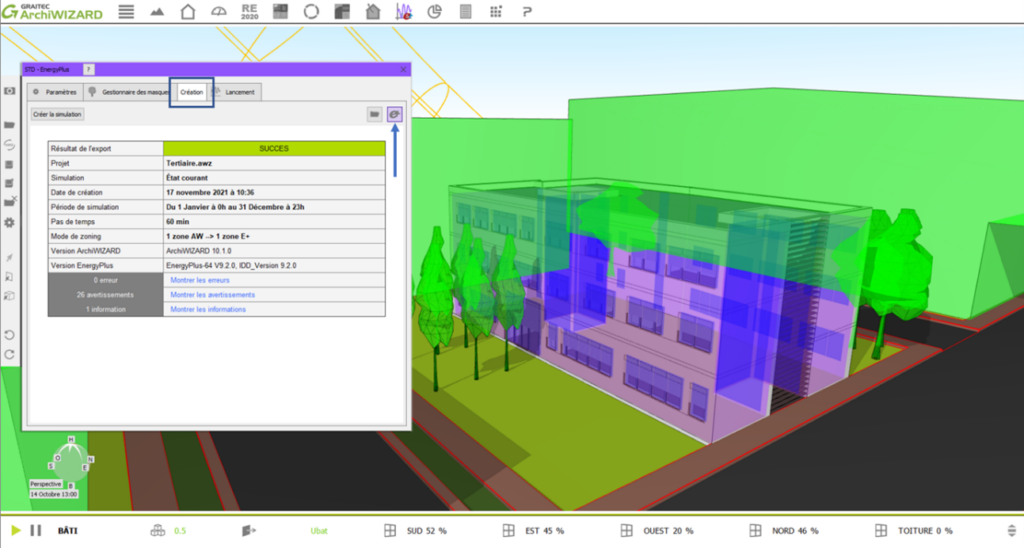
EnergyPlus is a powerful energy simulation tool used by architects and engineers to evaluate the energy efficiency of buildings. It is highly regarded for its ability to simulate complex energy systems, including HVAC, lighting, and renewable energy systems.
- Key Features:
- Building Performance Simulation: EnergyPlus simulates energy consumption based on building geometry, systems, materials, and environmental factors, providing architects with detailed insights into energy performance.
- Optimization for Energy Efficiency: The tool helps identify areas where a building can be optimized for energy savings, such as improving insulation, using energy-efficient systems, or utilizing renewable energy sources.
- Integrated Renewable Energy Modeling: EnergyPlus allows users to simulate renewable energy systems, such as solar panels, wind turbines, and geothermal heating and cooling, making it an ideal tool for sustainable design.
- Why It’s Great for Sustainable Architecture: EnergyPlus gives architects the tools to understand how a building will perform in terms of energy use and sustainability before construction begins. Its detailed simulations of energy systems help designers make informed decisions to minimize energy consumption and lower carbon footprints.
3. Sefaira: Real-Time Performance Analysis for Green Design

Sefaira is a cloud-based performance analysis tool that specializes in optimizing the energy and environmental performance of buildings. It integrates with Revit and SketchUp, making it an ideal tool for architects looking to analyze and improve their designs in real time.
- Key Features:
- Energy Modeling and Analysis: Sefaira allows architects to model a building’s energy performance quickly, helping to evaluate how different materials, systems, and building orientations will affect energy consumption.
- Daylight and Thermal Comfort Analysis: The software simulates natural daylighting and thermal comfort, ensuring that buildings maintain occupant comfort while reducing energy demands for lighting and HVAC systems.
- Sustainability Certification Support: Sefaira is designed to help architects meet green building certification standards like LEED, BREEAM, and WELL, by providing detailed reports and analysis that demonstrate compliance.
- Why It’s Great for Sustainable Architecture: Sefaira is perfect for architects who need real-time feedback on how their designs impact energy use, daylighting, and thermal comfort. By integrating directly into existing design workflows, it helps streamline the process of achieving sustainable goals while meeting certification requirements.
4. Ecotect Analysis: Comprehensive Environmental Design Evaluation

Although Ecotect has been discontinued, its legacy lives on in tools like Autodesk Insight, which incorporate its powerful environmental analysis capabilities. Ecotect was known for its ability to assess building performance from a holistic perspective, factoring in not only energy use but also thermal comfort, lighting, and water efficiency.
- Key Features:
- Energy and Lighting Analysis: Ecotect provided detailed insights into building energy usage, solar gain, shading, and daylighting, helping architects understand how a building’s design interacts with its environment.
- Water Efficiency Analysis: The software also included tools to evaluate water usage in buildings, helping architects design systems that conserve water.
- Thermal Comfort Simulation: Ecotect assessed indoor environmental quality, including temperature, humidity, and air quality, to ensure the building is comfortable for its occupants while minimizing energy consumption.
- Why It’s Great for Sustainable Architecture: Ecotect’s integrated analysis capabilities allowed architects to understand how their designs would perform in terms of energy efficiency, comfort, and environmental impact. Though no longer actively supported, its influence remains in modern software like Autodesk Insight.
5. Tally: Material Impact Tracking for Sustainable Design
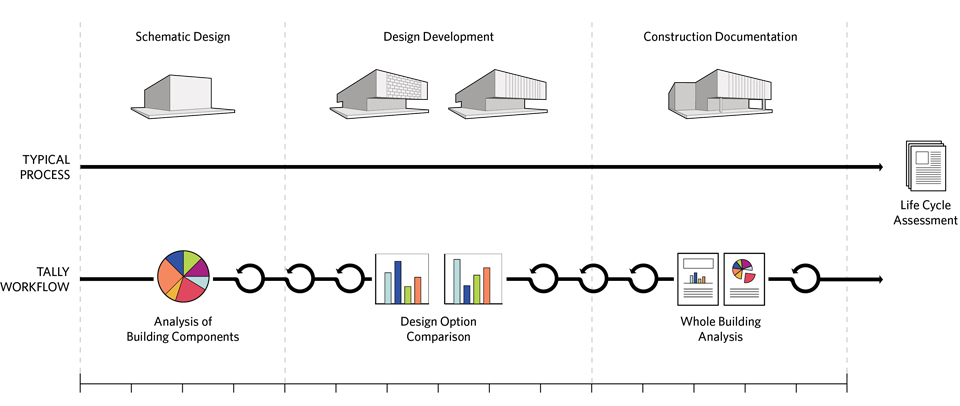
Tally is a tool used to analyze the environmental impact of building materials, helping architects make decisions that reduce the carbon footprint of their designs. By integrating with Revit, Tally helps architects evaluate the sustainability of different materials by assessing their life cycle impacts.
- Key Features:
- Material Life Cycle Analysis (LCA): Tally assesses the environmental impact of various materials by evaluating their carbon footprint, water usage, and other sustainability metrics throughout the entire life cycle of a building material.
- Customization for Local Materials: Tally can be customized to reflect the environmental impact of locally sourced materials, giving architects insights into how sourcing materials locally can help reduce carbon emissions.
- Energy and Emissions Reporting: The software generates detailed reports on the total energy consumption and carbon emissions associated with the building’s materials, helping architects make greener material choices.
- Why It’s Great for Sustainable Architecture: Tally helps architects evaluate the environmental impact of materials in real time, empowering them to make sustainable decisions from the beginning of a project. This life cycle analysis is essential for designing buildings that minimize resource consumption and waste.
6. One Click LCA: Streamlined Life Cycle Assessment
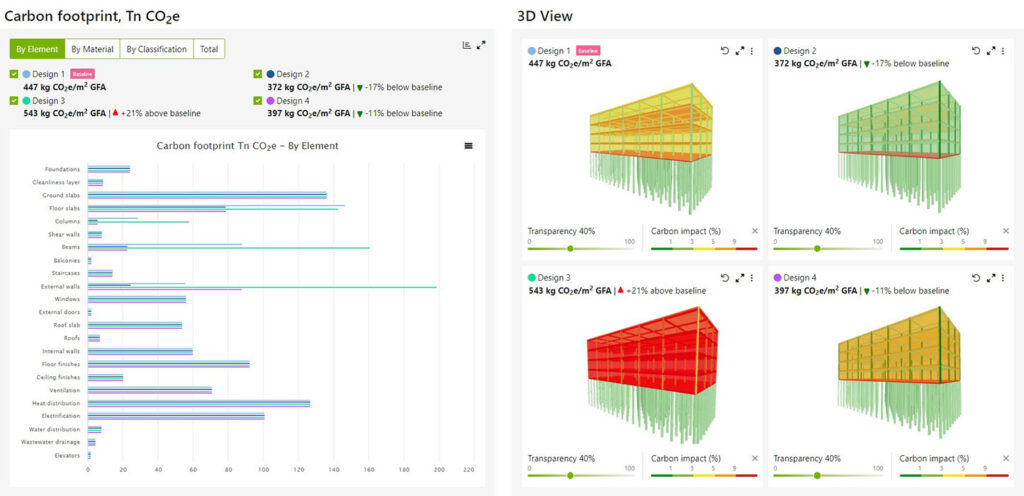
One Click LCA is an intuitive tool for conducting life cycle assessments (LCAs) on building designs. It helps architects assess the environmental impact of their materials, energy use, and overall building performance.
- Key Features:
- Life Cycle Analysis (LCA) and Carbon Footprint Calculation: One Click LCA offers a streamlined process for calculating the embodied carbon, operational carbon, and water usage of building materials and systems.
- Green Building Certification Integration: The software is compatible with various green building certification schemes such as LEED, BREEAM, and the Living Building Challenge, allowing architects to easily demonstrate the sustainability of their designs.
- Building Performance Tracking: One Click LCA also tracks the performance of buildings over time, allowing architects to refine their designs and improve their sustainability metrics during the design and construction process.
- Why It’s Great for Sustainable Architecture: One Click LCA simplifies the often complex process of life cycle assessment, allowing architects to make informed decisions about the sustainability of their designs. It supports the integration of green building certifications, making it a valuable tool for achieving high standards of environmental performance.
7. Green Building Studio: Cloud-Based Energy and Environmental Modeling
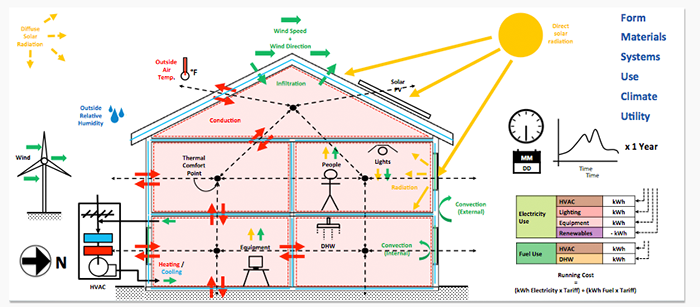
Green Building Studio (GBS), now integrated into Autodesk Insight, is a cloud-based energy modeling tool that helps architects evaluate a building’s environmental performance early in the design process. It uses powerful simulation tools to predict energy consumption, thermal comfort, and daylighting.
- Key Features:
- Cloud-Based Simulation: GBS runs energy models in the cloud, enabling real-time simulations that can be accessed from anywhere and improving collaboration among project stakeholders.
- Energy Use and Carbon Emissions Prediction: The software allows architects to predict energy consumption and carbon emissions for different building configurations, helping to optimize energy efficiency.
- Integration with Revit: Green Building Studio integrates directly with Revit, providing a seamless experience for architects working with BIM tools.
- Why It’s Great for Sustainable Architecture: The cloud-based nature of Green Building Studio allows for quick iterations and real-time feedback, helping architects refine their designs to meet sustainability goals more effectively. Its focus on energy use and carbon emissions makes it an essential tool for reducing a building’s environmental footprint.
Conclusion
Sustainable architecture relies on careful planning, intelligent design, and, most importantly, the right tools. In 2025, there is an abundance of software options available to architects that not only streamline the design process but also help assess and reduce the environmental impact of their projects. Whether through energy modeling, material selection, life cycle analysis, or real-time feedback, these tools are making it easier for architects to design buildings that are not just aesthetically pleasing but also environmentally responsible. By adopting these tools, architects can play a pivotal role in shaping a greener, more sustainable future.

